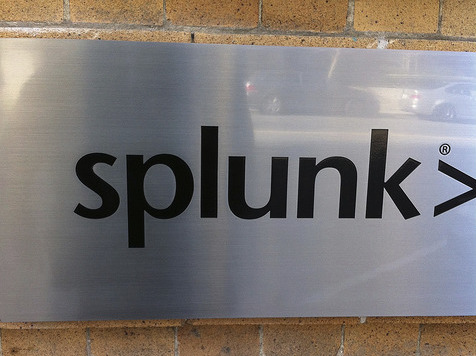Cloud Stocks: Splunk On The Right Track With Cloud And PaaS
Big data player Splunk (Nasdaq: SPLK) recently announced its fourth quarter results that surpassed market expectations. But as the company transitions from an on-premise to a subscription-based cloud software provider, its financials have suffered in the short-term. Revenues have declined year on year and margins remain elusive. But it has made the right moves so far by remaining focused on cloud, subscriptions, and PaaS.

Splunk’s Financials
Revenues for the fourth quarter fell 6% over the year to $745 million, surpassing the market’s expectations by 10.6%. Adjusted loss of $0.38 per share was higher than the market’s estimate of a loss of $0.39 per share.
By segment, license revenues fell 21.6% to $406 million. Maintenance and service revenues fell 3.7% to $167.7 million. Cloud revenues grew 72% over the year to $171 million.
Among other metrics, Annual Recurring Revenue (ARR) grew 41% over the year to $2.36 billion, ahead of the market’s estimate of $2.33 billion. ARR from cloud computing software improved 83% over the year to $810 million.
For the full year, revenues declined 5% to $2.23 billion and loss per share was $0.55.
Splunk forecast revenues of $480-$500 million for the first quarter, compared with the market’s forecast of $512.88 million. Splunk did not provide a forecast for the current fiscal.
Splunk’s Product Upgrades
During the quarter, Splunk announced enhancements to Splunk Cloud and Splunk Enterprise to strengthen its Data-to-Everything Platform offering. For the Data-to-Everything Platform, it announced an integrated solution that provides a single and consistent user experience across metrics, logs, and traces. It provides seamless monitoring, troubleshooting, and investigation capabilities. The comprehensive and powerful solutions will allow both IT and developer operation teams to tackle monitoring and observability challenges that other tools are unable to address. It also added a Splunk Machine Learning Environment that will allow companies to build and operationalize machine learning models by bringing data from several sources into one platform.
Splunk recently announced an update to its event streaming platform, Splunk Data Stream Processor. The new capabilities will allow it to access, process, and route live data from several cloud services, including Google’s cloud platform and Microsoft’s Azure event hub. It added new lookups and machine learning functionality to minimize compute loads and provide better accuracy when searching through data.
Splunk recently expanded its multi-year partnership with McLaren racing. As part of the partnership extension, Splunk will remain an official McLaren technology partner and will work with McLaren to enhance the performance across their Racing team, by providing data for every question, decision and action. By continuing to capture data across McLaren’s infrastructure, network, and server environment, it will be able to provide McLaren Racing function with assistance in accelerating operations and performance.
Splunk’s Growth Pillars
Overall, Splunk saw strength across all three of its key pillars – Security, IT Ops, and DevOps. The earlier acquisition of SignalFx last year helped it deliver triple digit growth in the ARR for its Observability business. Given the increased spending within IT environment and a maturing Observability suite, analysts believe that Splunk has a clear path to over $4 billion in ARR within the next two years.
Analysts believe that the global AIOps and Observability market is a $17 billion opportunity. Splunk is a leader in the market with more than 15,000 paying customers and is working to continue to strengthen its position in the space. But AIOps and Observability has plenty of competition with players like Datadog, Dynatrace, New Relic, and Broadcom, to name a few. Everyone is trying to differentiate themselves in specific parts of the stack, and Splunk has its work cut out.
Splunk is a mature PaaS player in the market that has a thriving app marketplace and developer ecosystem. It allows developers to access Splunk Cloud Services via REST APIs and SDKs from its custom-built cloud-native app. Developers can build apps and integrations that bring new kinds of data into the Splunk platform and help provide data-based insights to users. Developers can use the Splunk Web Framework to visualize the data in a Splunk app and create custom dashboards and Splunk apps with tables, charts, and form searches.
Splunk provides different tools for development, ranging from simple GUI with click-and-drag tools to other Backbone models for JavaScript developers. Developers also have access to Splunkbase, the site for the Splunk community to find apps. They can upload public app packages to Splunkbase for Splunk customers to download and install to Splunk Cloud or Splunk Enterprise deployments or distribute app packages privately to customers to run on a Splunk Cloud or Splunk Enterprise.
Splunk’s stock is currently trading at $131.03 with a market capitalization of $21.19 billion. It hit a 52-week high of $225.89 in August 2020 and a 52-week low of $93.92 in March 2020.
Disclosure: All investors should make their own assessments based on their own research, informed interpretations and risk appetite. This article expresses my own opinions based on my own ...
more


